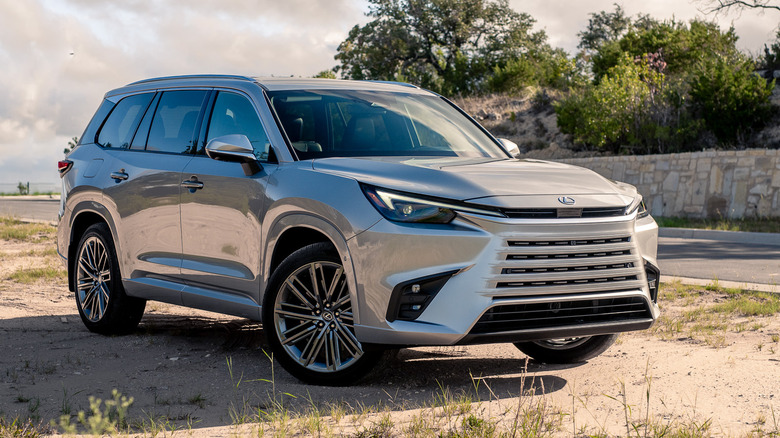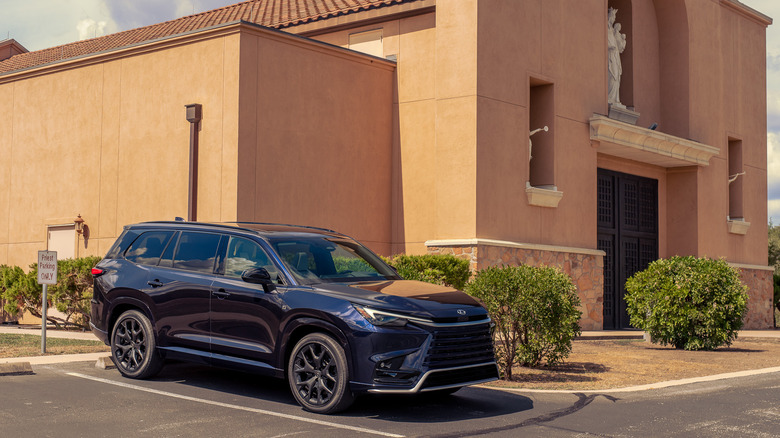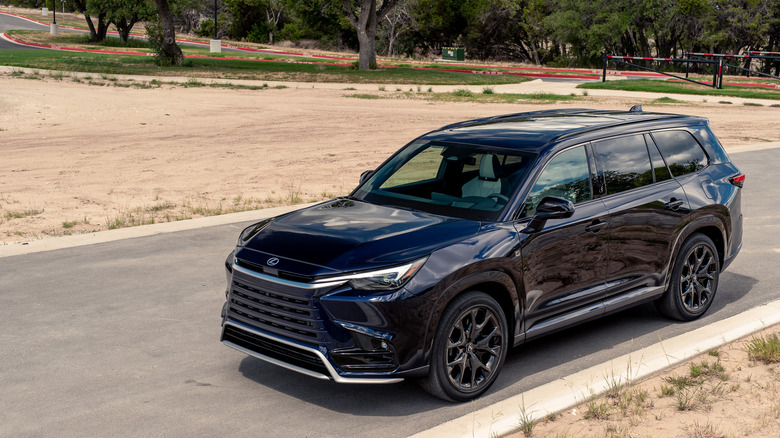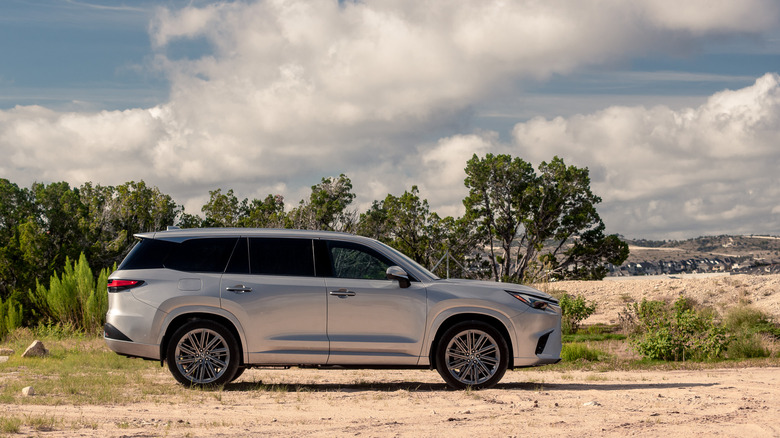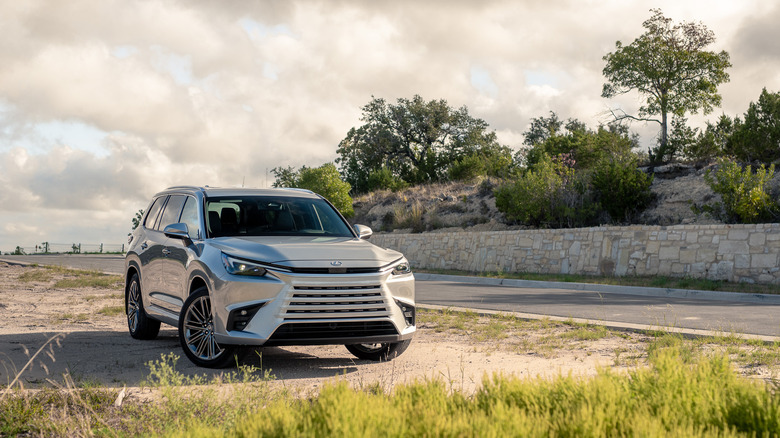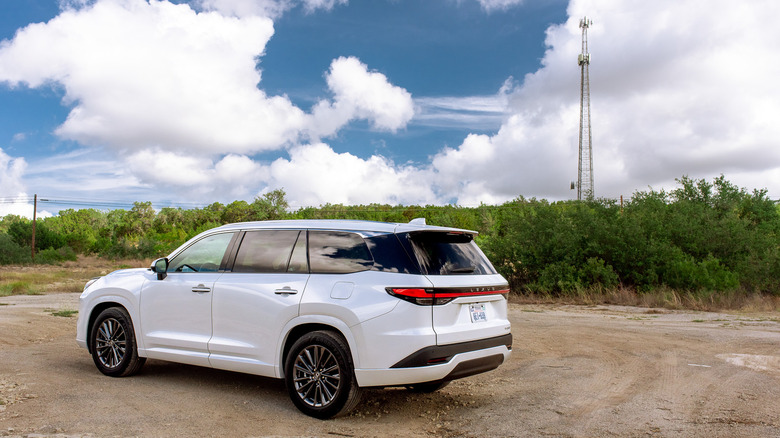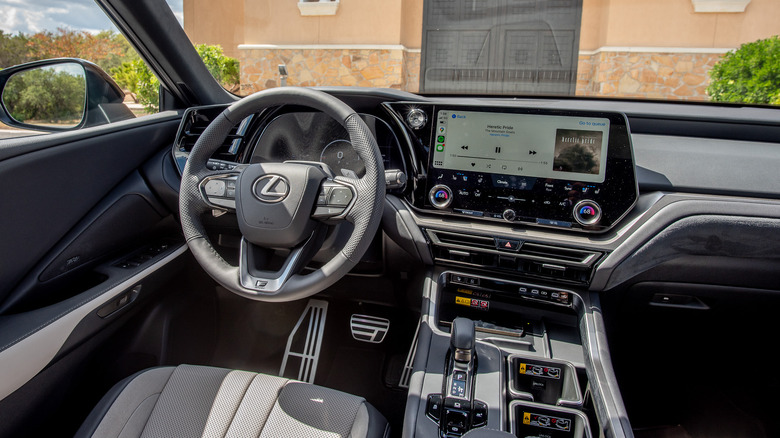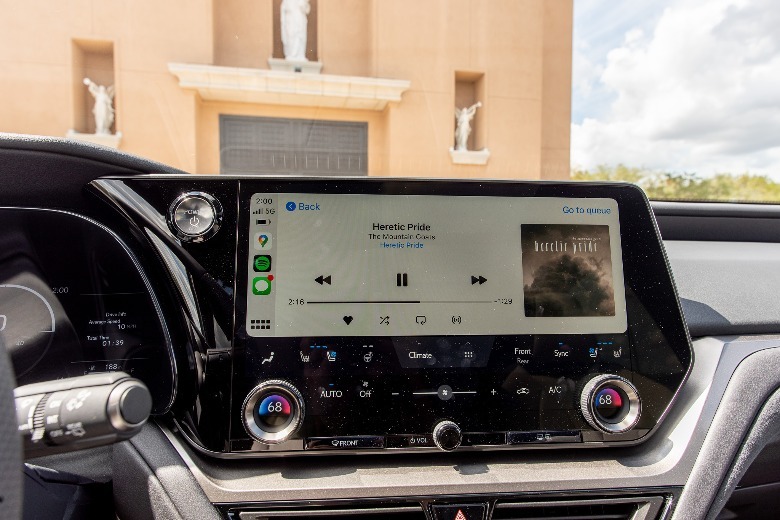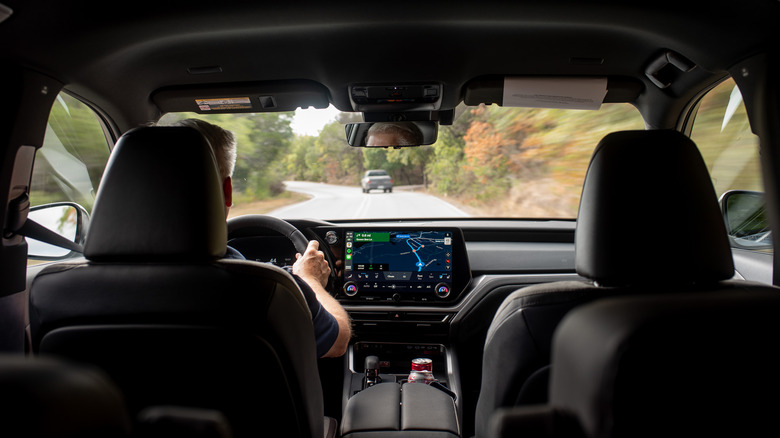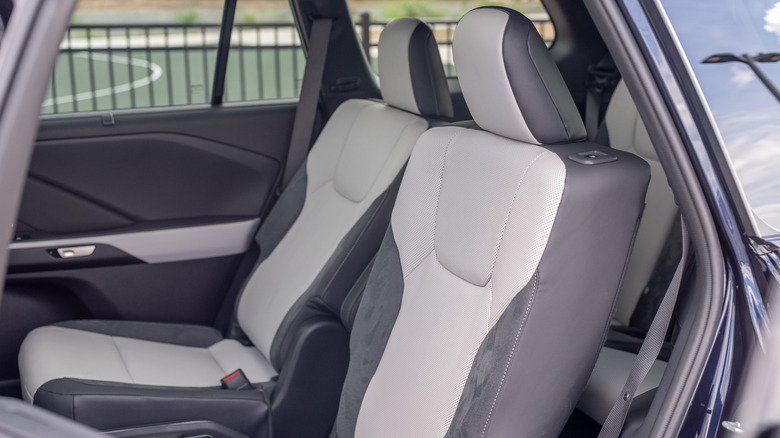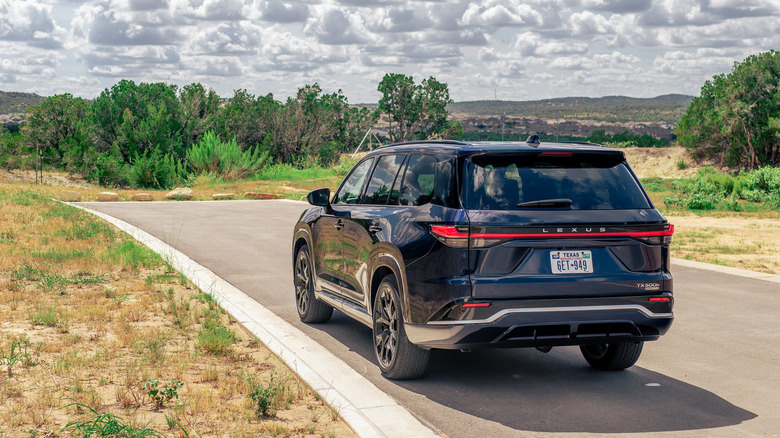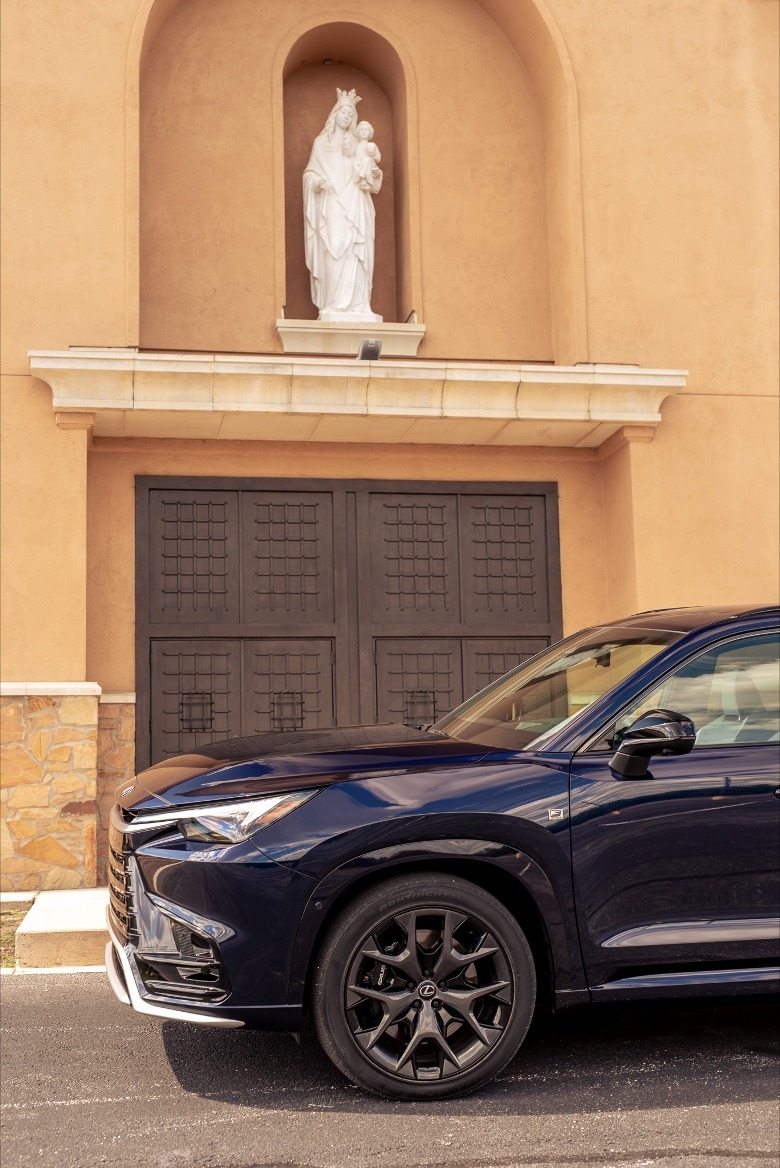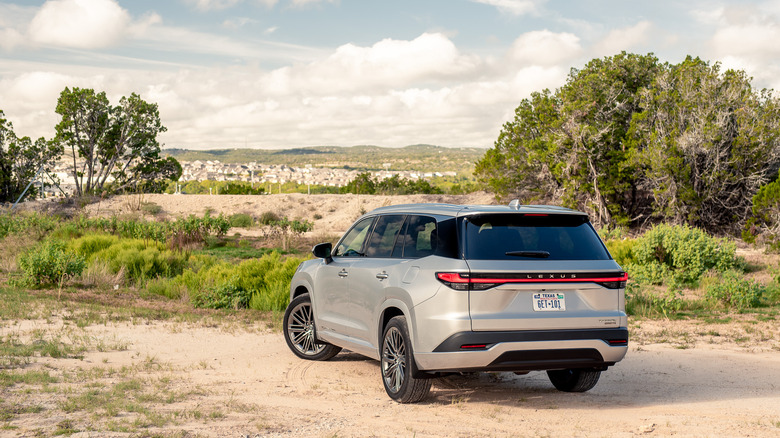2024 Lexus TX First Drive: The Answer To Three-Row SUV Prayers
- Typical Lexus build quality
- Array of drivetrains all feel well-suited and polished
- Base model still healthily optioned
- 14-inch touchscreen easy to use with pretty UI
- Rear row is easy to access
- Cavernous storage space
- Boring handling, even in F Sport form
- No physical buttons for climate control
- Technology Pack steering wheel capacitive-touch buttons annoying
Not every favor asked of God has to be a Hail Mary for an exceptional feat; some of our requests are very simple. An on-time flight. An uncracked phone after an accidental drop. Or, in the case of Lexus shoppers' devout prayers, a roomy, stylish three-row SUV to replace the now-discontinued (and oft-maligned) three-row (just about) RX L. That last request has been answered with the 2024 Lexus TX, the company's all-new midsize offering with a trinity of rows.
While it may have been a straightforward prayer, Lexus has answered it with a dizzying array of options, including three all-new drivetrains (one of which being a plug-in hybrid) at every price point and horsepower number you could have thought to light a candle for. I headed to Austin, TX to drive it and discover whether the TX's pews were going to satisfy the Lexus faithful—or even convert some of the German-marque devout.
Answered prayers come in many forms
The Lexus TX is going on sale with three available powertrains. The TX 350 serves as the base model; it starts at $55,050 (after $1,350 destination) and hosts a 2.4-liter turbocharged four-cylinder that produces 275 horsepower and 317 foot-pounds of torque. An eight-speed automatic routes this power to the front wheels, although all-wheel-drive is available for an additional $1,600 fee on top of all TX 350 trims.
F is for... hybrid
The 2024 TX 500h F Sport offers the same 2.4-liter gas motor paired to an electric rear axle and a six-speed automatic; that combination of powerplants work together to put down a total of 366 horsepower and 406 foot-pounds of torque to all four wheels. Fuel economy improves by 15% over the TX 350 from 23 combined mpg to 27, and 0-60 gets shaved down by about two seconds, from eight to roughly six. The TX 500h also gets four-wheel-steering as a standard feature, and is the only TX trim that offers it. This drivetrain is only available with the F Sport performance package, and starts at $69,350.
Lexus TX 5 and a half
The pinnacle trim is the TX 550h+, which pairs a 3.5-liter V6 to a lithium battery and a plug-in electric drivetrain. These work in concert to make 404 horsepower, which is sent via an e-CVT to all four wheels. All-EV mode boasts an estimated 33 miles of range; the 550h+ gets both the best estimated mileage at 29 mpg combined in hybrid mode and the fastest 0-60, at just a touch under six seconds. Pricing is unavailable for the TX 550h+, and it won't hit dealerships until early 2024, although Lexus still tossed me the keys to one to test.
TX 350s come in a variety of options packs, but all TXs regardless of drivetrain or trim level get 5,000 pounds of towing ability, the Lexus Safety Sensing 3.0 suite of driver-assistance features, and wireless device charging, Apple CarPlay, and Android Auto.
The spindle chills out (thankfully)
Stylistically, all TXs are a departure from previous Lexus products, especially from the front. Although Lexus still calls its grille a "spindle", it's nothing like the gaping maw and bulbous logos that adorned past Lexus noses, and its more understated look fits the typical lawyers-and-doctors clientele better. Overall, the TX is not exceptionally striking from any angle, but it is also resolutely inoffensive. It's well-suited by silver paint (seen here: Celestial Silver Metallic) and a corner office.
The TXPerience
I began my Lexus TX test in Austin, TX, with a completely base-spec, no-options white (Wind Chill Pearl) TX 350. The 2.4-liter base-model drivetrain—despite hosting two fewer cylinders than some of its competitors, like the V6-powered Acura MDX and Infiniti QX60—moves with enough haste it's hard to imagine needing more than this for most soccer-mom duties. Performing quick passes on the MoPac was a cinch, as the transmission dropped gears quickly when I needed it to, and kept the TX's drivetrain serene when I didn't. A sound-canceling audio system (exclusive to the 2.4-liter-equipped TX 350 and TX 500h models) helps keep the turbo's din from reaching the cabin, and adds to the feeling of zen.
Steering is pleasantly weighted and on the more-numb side of the three-row SUV market, something I think is appropriate for the segment, and the ride is comfort-prioritizing over sporty on the TX 350. The standard trim's 20-inch wheels definitely do favors for the ride quality, as well.
Texas-sized touchscreen
The TX is based on Toyota's most-recent Grand Highlander, although it has enough sound deadening and extra stiffening and feels markedly different inside. Truthfully, I was pleasantly surprised at how well-apportioned the interior felt on this completely unoptioned, front-wheel-drive TX, mostly thanks to the base faux-leather (called NuLuxe by Lexus). It's so close to the real deal that I had to double-check the spec sheet to confirm it was synthetic.
Build quality is also rock-solid, with thoughtful material choices on every touchpoint and stereotypically Lexus interior panel fitment (read: excellent). Every model also gets a 14-inch touchscreen infotainment interface, which also goes a long way toward helping the base model feel luxuriously outfitted.
The touchscreen UI and design is pleasant and responsive, and there are physical knobs for volume and both driver and passenger climate control temperatures. All of the other settings for climate control are touchscreen-driven, though, which is unfortunate if you enjoy buttons; luckily, even when using CarPlay or Android Auto, the climate controls are permanently displayed, which mitigates most of my would-be complaints with a lack of real buttons.
Far from shotgun
The base model TX 350 gets a typical three-row seating arrangement, with both the middle and rear rows offering benches that allow for seating of up to seven. (The TX500h and 550h+ solely offer captain's chairs in the center row, which reduces seating to six total occupants; the TX 350 can be optioned with captain's chairs as well.) The second row has a one-touch button to fold the seat forward and slide it for easier ingress to the rear row, and even with a 6'1", all-leg body like I have, it was relatively easy to clamber in and out of the third row.
The third row is on the larger side for a midsize SUV, but it's still best suited for people significantly shorter than me. Maximum legroom for the rear row is 33.5 inches—and with the second-row slid forward, it feels downright spacious in the backmost seats—but with the seats in front realistically slid back to accommodate a person sitting in them, my knees were firmly planted in the leather of the second-row.
I did, at least, have plenty of headroom all the way in the back (37.2 inches) and even when my companion driver was really hustling the TX around Austin hill-country roads, the ride in the rear was comfortable enough that carsickness was solidly off the table. It is certainly a massive improvement over the RX L, and puts Lexus in strong contention with the rest of the midsize SUV market, and that's the benchmark to keep in mind here.
Captain's shotgun
The second row was excellent, as expected. The captain's chairs are plenty comfortable (and on the less-bolstered side, which I prefer for rear passenger seats) and I had lots of room to stretch, even with a 6-foot-tall driver in front of me. There are seven power outlets situated throughout the cabin, so no matter where I sat, I never worried about my phone dying on me.
Cargo space is excellent with the third row up; the TX boasts 20.2 cargo feet behind the third row (enough for seven carry-on suitcases), and an astounding 97 cubic feet with all three rows folded flat, a number that usually would be the purview of full-size SUVs.
Electrifying the drivetrain, maybe not the drive
From here I moved into the mid-range blue (Nightfall Mica) TX 500h F Sport. Handling was slightly more spritely than on the TX 350, thanks to Lexus's Adaptive Variable Suspension, which uses electronic dampers that change stiffness based on driving style and road conditions. The difference wasn't really notable in normal driving, as the TX 500h stayed comfortable, but in hard cornering it felt more level. The four-wheel-steering also helped with turn-in, although honestly I preferred much more how easy it made doing a quick U-turn (the TX 500h boasts an 18 foot turning radius, a foot less than the other TX models) to any performance boon.
The TX 500h's powertrain is quick. 0-60 times drop to right around six seconds, thanks to the hybrid's extra power, and the six-speed is well up to the task of making it feel lively, but the TX experience still lacks the sportiness that some competitors possess. The steering is still relatively unengaging despite a nice linearity and weight, and the gently convexed hood adds too much of a sense of width for it to ever feel slim and nimble (for a three-row, even). While I loved the TX 500h from the perspective of a would-be hybrid cross-shopper, it was uninspiring as a six-seater canyon-carver in a crowded performance SUV market.
Sumptuously plugged in
The final model I tested was a fully-loaded TX 550h+, the plug-in hybrid variant. This drops the F Sport package, unlike the traditional hybrid, and it feels better for it. The TX is definitely at its best when focused on traditional Lexus sumptuousness, and the 550h+—which is only sold in the top-grade Luxury trim—is well-focused.
The powertrain is the most potent of the trio on offer, with a sub-six-second 0-60, and the CVT is completely flawless, with no droning on flat-out sections or rubber-band-behavior during rapid passing. The fullest suite of Luxury trim features (21-speaker Mark Levinson sound system, heated and cooled seats all the way to the second row, traffic-jam assist) are excellent, as well; throwing the fullest suite of Lexus Safety Sensing 3.0 into the 550h+ illustrates just how rock-solid Lexus's driver-assistance features are. Skip the Technology Pack, though, however—that swaps the steering-wheel buttons for capacitive-touch mousepads that are way too sensitive and incredibly challenging to use in conjunction with the heads-up display.
Proverbs 21:20
The TX, overall, is a massive boon for its market. Lexus estimates that it will sell over 40,000 of them next year, and I have no reason to doubt that; the question now is how many converts Lexus can preach to. While I suspect those cross-shopping with sportier three-rows (such as the Acura MDX Type S or Audi SQ7) will be disappointed, anyone who just wants to get from their suburb to the kids' Sunday school (so, most three-row shoppers) will be enraptured by what the TX offers.
The TX 350 is especially compelling for how well-featured it is at a mid-fifties price point. While it's not the cheapest three-row luxury SUV on the market, there is no form that it ever feels cut-rate. Those who have beseeched Lexus for a better midsize three-row can rest easy now: their angel has arrived, and it's called the TX.
